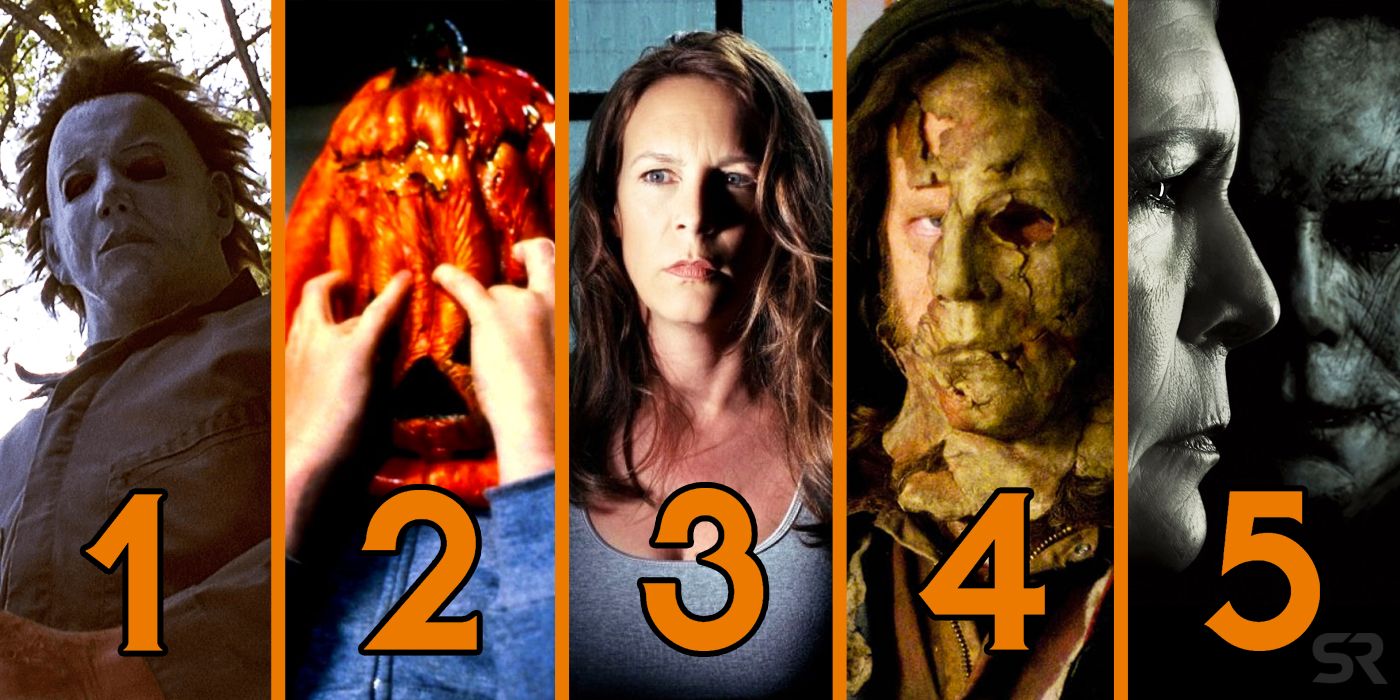
Continuity in the Halloween franchise is as complicated as Michael Myers' relationship with Halloween night itself. With a total of eleven movies in the entire franchise, what began as a simple cat-and-mouse-style slasher movie in the late '70s ultimately shattered into a confusing mess of retcons, remakes, and spinoffs; and understanding which movies in the franchise you must see versus the movies in the franchise you're better off avoiding requires a precise analysis of each entry.
Before John Carpenter and Debra Hill had ever even begun production on Halloween, it was a scrappy slasher with a mostly bare-bones synopsis: a crazed serial killer stalks babysitters, killing them off one by one. In fact, the original name of the movie was The Babysitter Murders, and it wasn't until producer Irwin Yablans suggested that the movie might make more of a mark were it based around a particular holiday, following the success of Black Christmas, which was released a few years prior. However, this straightforward mold wouldn't maintain its simplicity for very long. As early as its sequel, Halloween II, the series was well on its way to overcomplicating everything from its antagonist's origins to its protagonists' continuity, making any shot at bingeing the franchise a feat in and of itself.
Related: Halloween 2018: 15+ References To The Non-Canon Sequels In The Reboot
Given all of its multi-layered chaos, the Halloween franchise has essentially become the Inception of horror movies. There are five distinct Halloween timelines, all of which wind up more confusing than they need to. That said, there is somehow order in all the madness. This guide offers a streamlined approach to the franchise with options, ease, and the opportunity to avoid some of the more lackluster entries entirely.
Halloween Timeline #1: The Original/Curse of Thorn
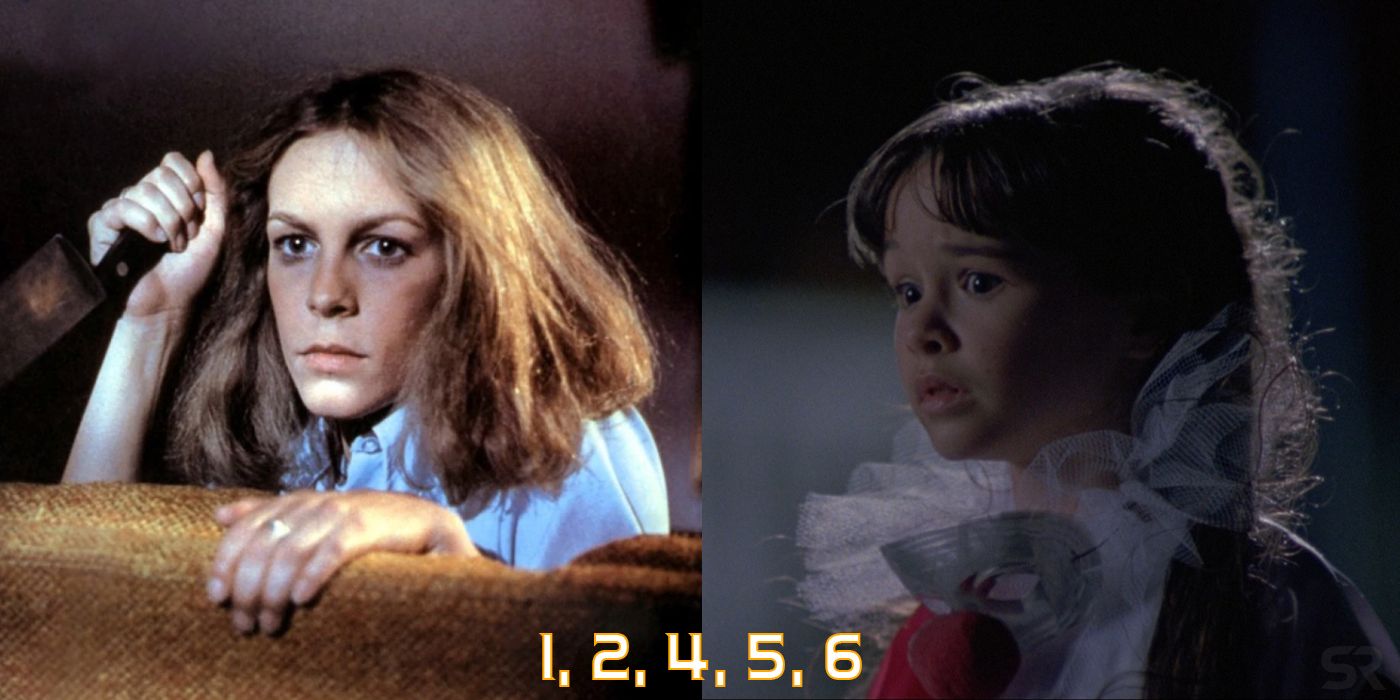
Included movies: Halloween, Halloween II, Halloween 4: The Return of Michael Myers, Halloween 5: The Revenge of Michael Myers, Halloween: The Curse of Michael Myers
The first of the five timelines in the Halloween franchise follows the first, second, fourth, fifth, and sixth movies. This is known as the "Curse of Thorn Timeline," seeing as it revolves around the Druid curse that forces Michael Myers to kill every member of his family (which, in the Halloween 6 Producer's Cutat least, also involves incest). Within this timeline, Michael seeks out his sister Laurie Strode (Jamie Lee Curtis) in Halloween and Halloween 2, but when she's killed in a car accident, he segues to Laurie's daughter Jamie (Danielle Harris, J.C. Brandy) in Halloween 4, 5, and 6.
In this timeline, it's revealed that Michael has been secretly under the tutelage of Dr. Terrence Wynn at Smith's Grove Sanitarium, though this fact wasn't made canon until Halloween 6. It also introduced the idea that Michael's curse can be passed on to another member of his family in the event of his death; and though this is hinted at in the final scene of Halloween 4, in which Jamie (sporting a clown Halloween costume like her Uncle Mike did in 1963 when he killed his sister Judith) stabs and presumably kills her adoptive mother, this twist is ultimately reversed as soon as possible in Halloween 5.
In some ways, this timeline can even be split in two. Seeing as Michael is presumably blown up by the end of Halloween 2, the first two films could technically make up their own timeline; and seeing as 4, 5, and 6 follow an entirely new protagonist, while also introducing new origins to the franchise, these three movies can technically make up another.
Halloween Timeline #2: No Michael Myers
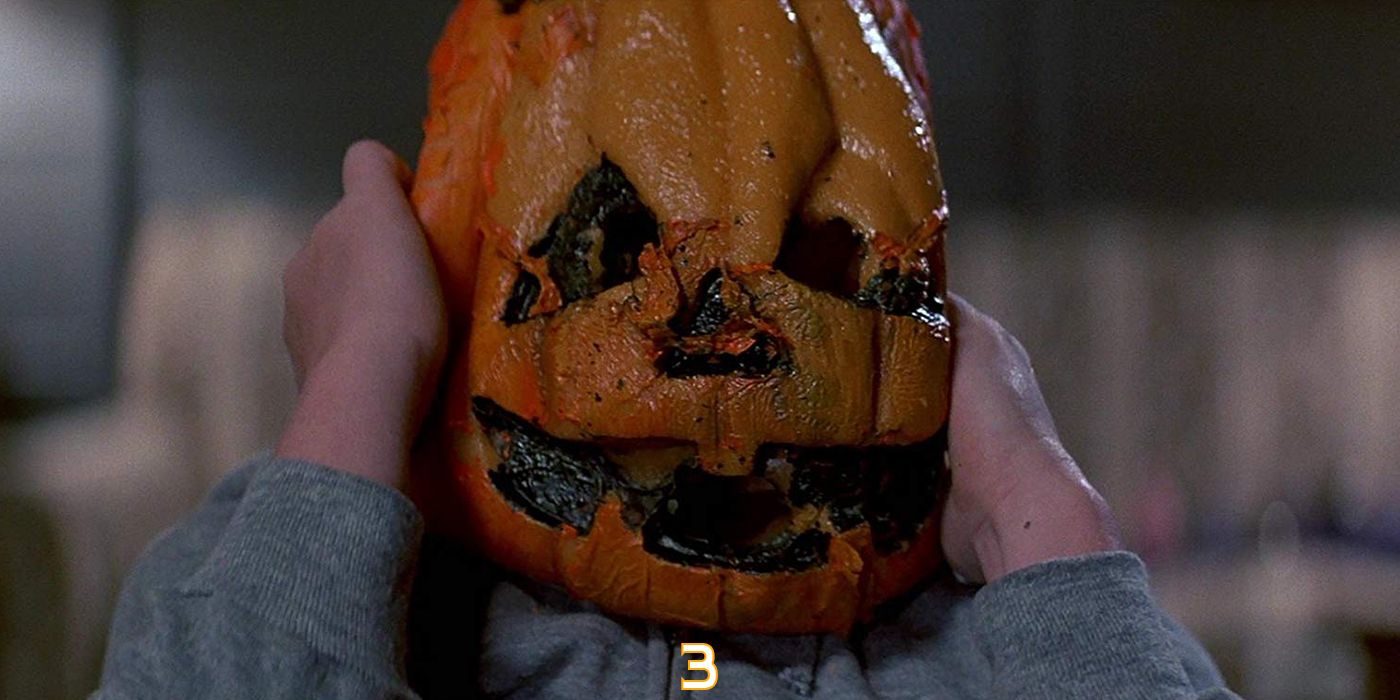
Included movies: Halloween III: Season of the Witch
The second of the five Halloween timelines is the single standalone movie in the entire Halloween franchise. Subtitled Season of the Witch, this movie was the result of Halloween's producers attempting to craft the franchise as a series of anthology movies based around the Halloween season, as opposed to continuing the story of Michael Myers. In fact, John Carpenter and Debra Hill had intended on taking this approach with the franchise directly after the first movie, but given Michael's popularity, a direct sequel was inevitable.
In Halloween III: Season of the Witch, a company called Silver Shamrock Novelties is attempting to murder children on Halloween night using three unique masks powered by witchcraft and mystic powers derived from Stonehenge. As a standalone movie, it successfully honors its seasonal roots; but as the third entry in a movie so far dedicated to a significantly more grounded storyline, it's jarring, out of place, and doesn't jibe with any Halloween franchise-bingeing marathons without standing out as the black sheep.
Some other standout proof that this movie isn't canon with the previous two Halloween movies is the fact that Nancy Kyes (who stars as Annie in the first Halloween) plays an entirely different character in Halloween III: Season of the Witch and a trailer for the first Halloween is even visible playing on a TV in one scene. One other connection is that the movie's director, Tommy Lee Wallace, played Michael Myers in the original Halloween during the famous closet scene opposite Jamie Lee Curtis.
Related: A Complete History of the Halloween Franchise So Far
Halloween Timeline #3: Laurie vs. Michael
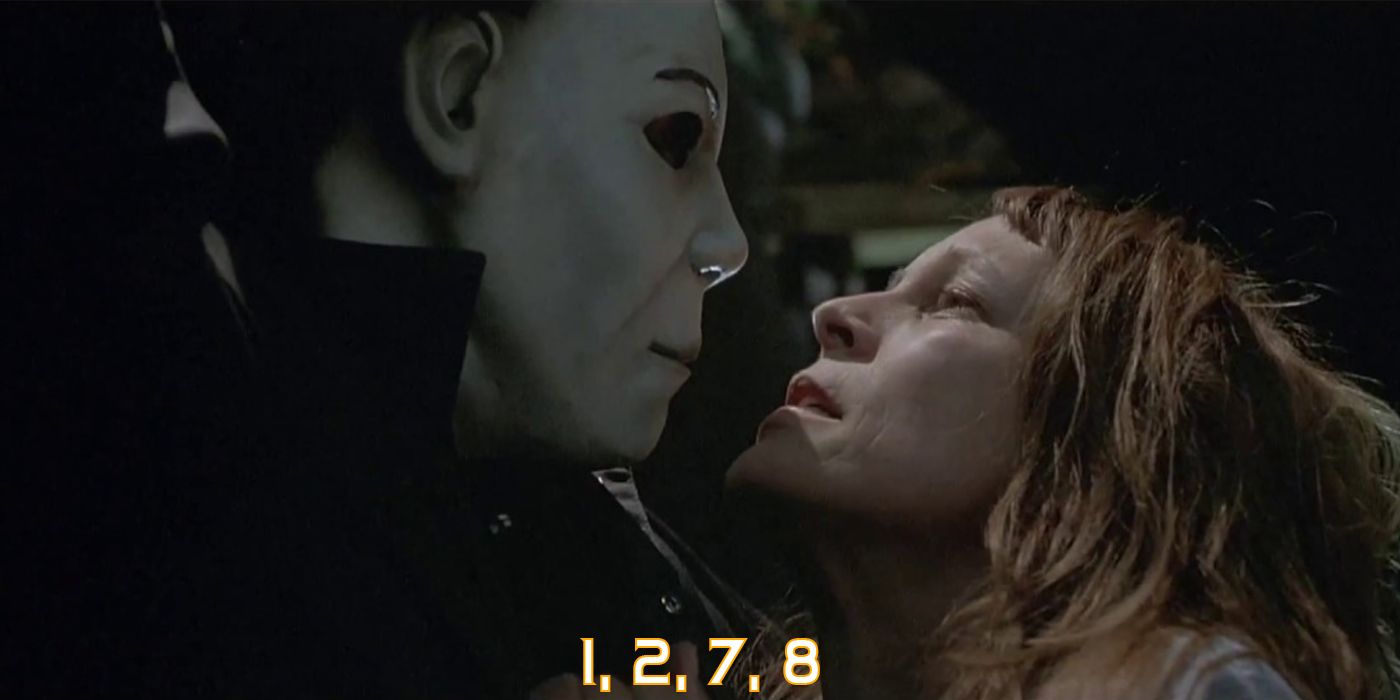
Included movies: Halloween, Halloween II, Halloween H20: 20 Years Later, Halloween: Resurrection
The third of the five Halloween timelines follows the first, second, seventh, and eighth movies. This is the "Laurie vs. Michael Timeline," seeing as it follows the original movie's main protagonist and antagonist over the course of four films. This timeline removes most of the extraneous details introduced in between some of these entries, including the Curse of Thorn, Laurie's daughter and grandson, and Michael's super-sized body count (though it's technically still possible to maintain some of the continuity from Halloween 4, given that Laurie reveals in part 7, Halloween H20, that she faked her death before changing her name).
In these movies, the action is geared solely around Michael tracking down his sister Laurie and maintains a digestible, back-to-basics storyline that mostly keeps with the tone of the original. That said, Halloween: Resurrection is widely regarded as one of the worst entries in the franchise, with diehard fans personally retconning it and considering 1, 2, and 7 to be a more ideal timeline, rounding out a clean trilogy.
Not only does part 8 include Laurie's unceremonious death in the opening scene of the movie, it retcons what could have been a perfect ending to the franchise in H20 (Laurie finally overcoming her fear of Michael and chopping his head off) and features Busta Rhymes "killing" Michael by way of stereotypical kung-fu fighting, shortly after uttering the now infamous line, "Trick or treat, mother f***er."
Page 2 of 2: Halloween's Remake & 2018 Reinvention Timelines Explained
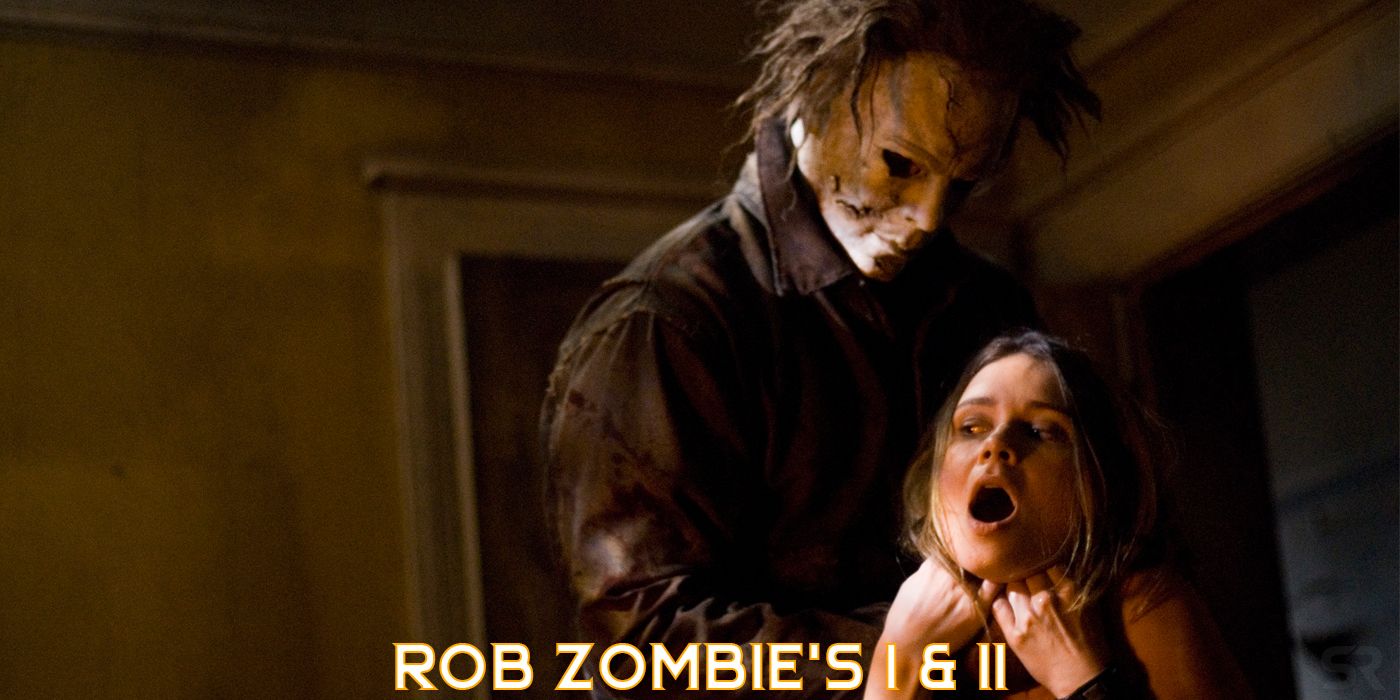
Halloween Timeline #4: Rob Zombie's Remake
Included movies: Halloween (2007), Halloween II (2009)
The original Halloween series ended with the eighth movie, Halloween: Resurrection, but the franchise was never officially pronounced dead. In 2007, Rob Zombie wrote and directed a remake of John Carpenter's original movie, and later followed it up with a direct sequel in 2009, thus creating the fourth of the five Halloween timelines. This is the "Rob Zombie Timeline," which consists of only two movies: Halloween and Halloween II.
Related: Halloween Review
This timeline is more of an accessory to the other four, and it's mostly attracted either casual viewers, fans of Rob Zombie, or general completionists. The first movie more or less follows the exact plot of Carpenter's Halloween - with some added flair and a modern setting to set it apart - while Halloween II takes massive creative liberties with the source material and indulges in a kind of expressionist-style horror. Zombie plays with the psychic connection Jamie has with Michael from Halloween 4 and 5, but substitutes Jamie with Laurie. By the end of Halloween II, Laurie kills Michael, but essentially takes on his psychotic behavior, ending up in a psychiatric ward, just like her uncle. It's since garnered more appreciation from fans over the years for its individuality, overshadowing the first movie's more traditional imitative mold.
Halloween Timeline #5: The 2018 Reinvention
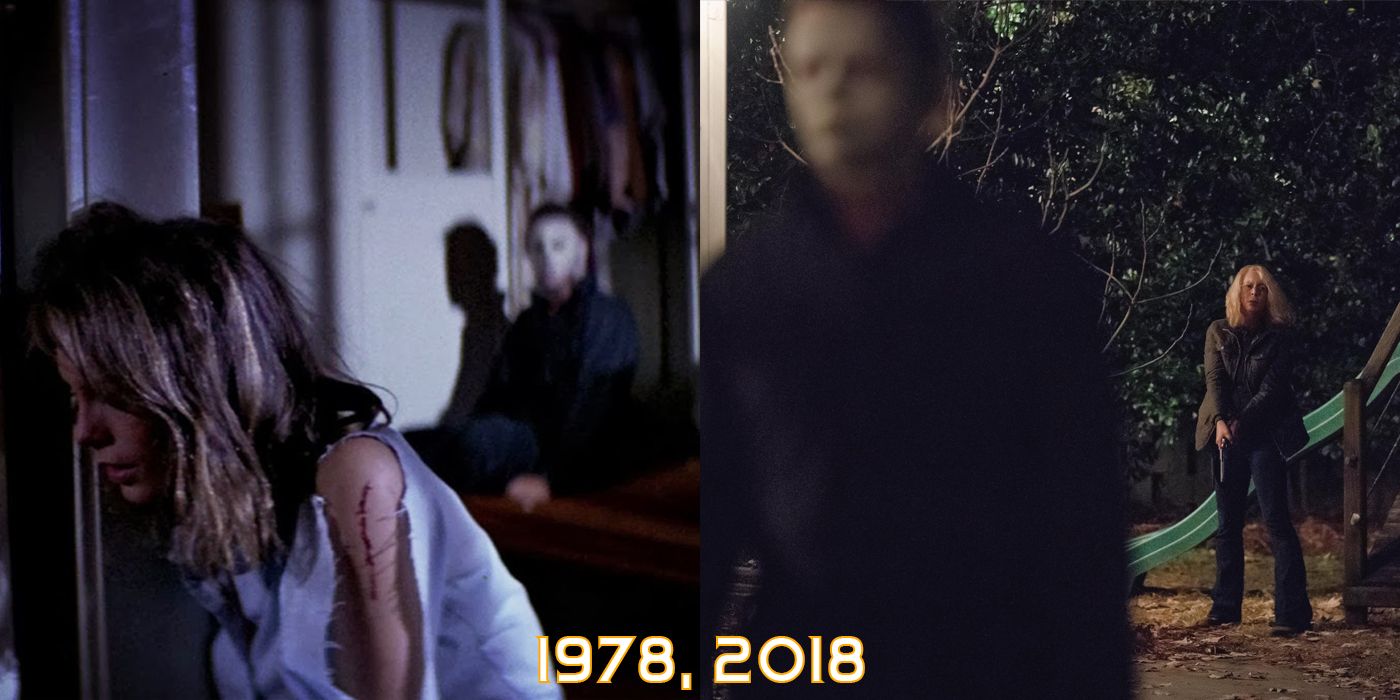
Included movies: Halloween (1978), Halloween (2018)
The last of the five Halloween timelines is not only the simplest, but the newest and boldest. This is the "Reinvention Timeline" (to borrow a phrase from Blumhouse Productions founder and CEO Jason Blum), where every movie in the franchise between Halloween (1978) and Halloween (2018) are ignored completely. This year's Halloween picks up 40 years after the events of John Carpenter's original movie, retconning everything from the Curse of Thorn and the fact that Michael and Laurie are related to Jamie Lloyd and a significant death that takes place within one of the other timelines.
This timeline is as bare bones as it gets, where Michael doesn't have supernatural abilities, hasn't been roaming around free for the past 40 years, and isn't seeking out Laurie Strode for any reason other than the fact that he's simply finishing what he started four decades earlier. It's also the first time since the original sequel in 1981 that John Carpenter is personally involved with a Halloween movie (not only as an executive producer, but as a creative consultant and one of its composers).
More: Halloween Reboot: Trailer, Cast, Every Update You Need To Know
from ScreenRant - Feed https://ift.tt/2EqfScy

0 Comments